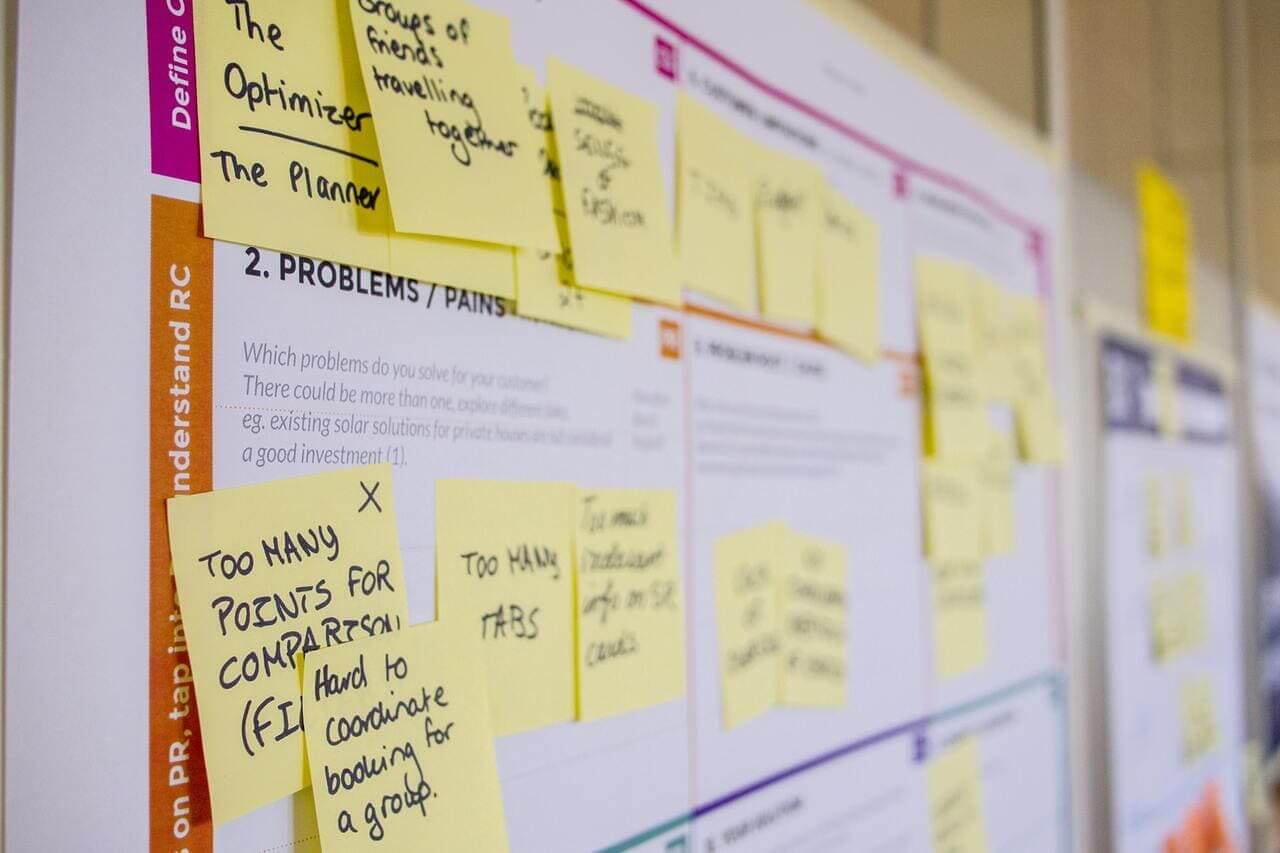Have you been wondering how to start a toy business? Maybe you've a lot of questions.
How do you get into the toy industry? How much money do you need to start a toy company? What are the pros and cons of toy business? How much money can you make from the toy business?
Just like in the case of opening any other business, there's always a lot to consider and make decisions.
The toy business is amazingly resilient. It is considered a recession proof industry. Even during tough economic periods such as Covid-19, 9/11 and the global financial crisis, the toy industry performance was far better than other consumer goods.
The main reason for this resilience is that the parents ( and grandparents ) desire to bring joy to their children. This desire gives a very strong foundation to the toy industry.
According to statista, US based revenues for the toys and games segment amount to around $36 billion dollars and is expected to grow around 3.67% annually.
Globally the toy industry averages in excess of 100 billion dollars.
With such a great demand forecast, there could never be a better time to start your own toy business.
Read on to learn everything you need to know about how to start a toy business.
As a toy business owner, you know that there are a lot of toy varieties to choose from. It is impractical to think that you can showcase every toy type in your store. When starting a toy business, the first step that you need to decide on is the business model.
You have several options to consider:
Reselling / Retailing
The most popular business model is being a reseller. In this model you can buy toys in limited quantities from wholesalers and distributors from around the world. As you will be able to buy your inventory in limited quantities, you will be able to diversify your product selection.
For example, specialty toy stores such as Toys “R” Us, Lark Toys source the toys from a ton of different toy brands and display them on the shelves in their store. It is their smart curation that attracts millions of consumers that walk into their stores all year long. Aisles in big box stores such as Target, Walmart are also a mini-toy store in itself.
When you are just starting your business, you may not have deep pockets like them and thus your options for partnerships will be limited. But if you plan it well, you can start with the most popular toys and build a good collection over a period of time.
Tip: Being a reseller, diversifying your product variety to the max level possible.
Wholesaling
The other business model you can try is being a wholesaler. In this type of business model, you can have direct partnerships with the toy manufacturers and sell them to the retailers and distributors.
As you will not be selling the toys directly to the consumers, you won't have to invest in store space and can work from logistic hubs / industrial parks. The marketing will be a lot less competitive compared to eyeing the direct consumers. Additionally, lots of retailer's purchases will be repeated and thus you will be able to plan your investments well.
Tip: Being a wholesaler, try gaining expertise in a particular toy segment. This will help you become a known business for that toy segment and get larger quantity order sizes with the toy brands.
Manufacturing
If you have an amazing toy product idea, you can surely try your hand at manufacturing. Being a product inventor, you will have many sales channels to sell your toys. Your own brand store, a partnership with a wholesaler, kiosk or a popup shop or a direct relationship with the small retailers.
Tip: Don't get carried away with your idea and get them manufactured in bulk quantities from the beginning. Start selling with a small batch to get a better idea around sales forecasting and customer feedback.
A solid business plan is a must if you want to make your toy business successful. It will help in getting your toy business organized and also be necessary when you look for funding to grow your business.
A well crafted business plan will help you keep track of your business, outline your plans for your toy business and prove your business potential to the investors.
There is no perfect business plan formula as such and varies from business to business. You can customize your business plan according to your needs, but make sure that it contains the main components such as executive summary, market analysis, marketing and sales plan, financial plan and projections.
As such a well done plan is able to communicate the most important outlook of any business: what you will be selling, who you will sell to and how you plan to reach out to them. To make the process easier and make sure that you don’t miss out on any important point, you can use a business plan template or subscribe to a business plan software.
Toy industry is one of rare businesses where kids can make or break the success. Even though it's the parents making the purchase, they are very much influenced by what the kids want to buy. Thus along with a solid business plan, you will need a great business name that can become popular among the kids.
If you want to give it a try, just take a minute thinking about a toy brand which had a non-fun, non-kid friendly name. The chances are you wont be able to think of any such brand.
A business name is extremely important in toy business. It needs to cover the following points:
- Catchy and fun
- Easy to remember especially by the kids
- Easy to pronounce
- Is not restricted to a single product type
Along with the things mentioned above, the ones that you are in charge of, you need to also look at the ones that are not in your control. Take care of the following steps before finalizing on a name for your toy brand:
- Check with the secretary of state if the name is available
- Perform a Google and trademark search to make sure that you can use it
- Check with a domain registrar to see if the domain name is available
- Check for availability of social media handles with that name
- Check if there is nothing offensive ( especially in any foreign language) or negative associated with the direct or phonetic version of the name
The chances are that as a part of a business plan, you have already considered an entity structure for your business. But if you haven’t done that already, now is a perfect opportunity to choose.
As the entity structure affects tax, compliance and other legal requirements, it is an important step to tick when starting a business. You need to plan ahead and choose from the following options:
- A sole proprietorship
- Limited liability company (LLC)
- General partnership
- Corporation
Generally, if you’re just starting your toy business, a sole proprietorship is an obvious choice and a popular legal entity structure. It is the simplest and easiest way to get started.
The downside is that you will be personally liable for any issues your business may be put under. Especially, as your end consumer is a kid, you need to be extra careful and have protection in place from any lawsuits that may arise. It is prudent to consult an attorney or a qualified expert to help you decide on this step.
With their help you can be assured that a decision that affects your taxes, liabilities, and risk is under the guidance of a qualified professional. They can also guide you with a plan about transitioning to another entity structure as your business grows.
That said, once you have decided on the entity structure, you will need to register your toy business with the relevant state and federal agencies.
The next logical step is to get more specific and outline the toys your business will sell. As a new business owner, you may want to start small and get products that require less investment both in terms of money and marketing efforts. Some of the product segments you can choose from is listed below:
- Construction sets
- Puzzles
- Card games
- Board games
- Stuffed toys
- Dolls
- Toys for Toddlers
- Video game consoles
- Plastic toys
- Sports toys
You may try answering these questions before deciding on what toys to choose:
- What's the market demand for these toys?
- Are these toys seasonal?
- Are these toys readily available at other stores?
- What profit can you make from these?
- How much will supplies cost?
- Are these toys trendy and is there a chance for leftover stock?
- How much will storage cost?
- Will they fit well in the infrastructure you plan to build?
Once you have answered these questions and have a concrete business plan, it can act as a roadmap to take your toy business from ideation to a successful enterprise.
This step may seem to be more of a trouble than an interesting activity. But it is certainly one of the most important ones. So just get ready to roll up your sleeves and do some paperwork.
When learning how to start a toy business, it is important to understand the legalities of doing a business. You need to make sure that you have any required licenses, permits and insurance to legally start your toy business.
In particular, as your business has kids as the end consumer, you need to double check all the requirements that apply to your business. If you’re starting your toy business from home, you will need to look into business licenses and regulations for starting from home. If you also plan to sell them online, you will need to look into online seller licensing as well.
By doing all of the above, you want to make sure that you don't get hit with a fine or get into any legal trouble. Especially if you get affected by these in the beginning, your business may not get off the ground as you may need to focus your attention on things that are directly not related to your business.
If you plan to hire employees to help you with your toy business, you will have to obtain an employer identification number also known as an EIN number. It is really important for tax purposes along with other things. Even if you are not planning to hire employees, EIN is helpful for all funding and financial steps such as opening a business bank account or applying for a business credit card.
The next thing you need to get is business insurance. For any business with employees, you have to have workers compensation, potential disability and unemployment insurance. You may also need general liability and commercial property insurance.
With the above steps you should now have all the set up in place, know what to sell and where to get the toys from. The next step is to get started on the sales of these toys. It isn’t always a good idea to go just with the gut feeling and invest all of the precious dollars into setting up a fancy storefront.
It is wise to start small ( it is always motivating to grow and scale ) rather than starting big and then slowing things down. For your toy business, you can start by partnering up with other small businesses to leverage their customer base to test your toy business idea.
You can also leverage online marketplaces such as Amazon and eBay to get some idea about the sales and problems faced. Even though these marketplaces charge commission, it is okay to not think too much about the profit in the beginning. The experience that you will gain on a marketplace has the potential to speed up your understanding of the business by many times.
You can also start by investing time in setting up your own ecommerce store. With beautiful ready to start packages available from Shopify, Squarespace and Ecwid, you can get started in no time.
Tip: Set up your shop on social media platforms such as Facebook, Instagram and Tiktok for an additional revenue opportunity for your toy business.
You would want to make sure that you follow all the rules and regulations set up by the state and other authorities. This step will help you in the right zone and away from legal trouble and penalties at the later stages of your business.
It is a well known fact that you need money to make money. Even if you have a ton of money to invest, it isn't a wise decision to invest all your money into a venture that isn’t proven yet. When securing an external funding, along with the money, you also get partners that share your vision and invest in your idea. Their experience and business knowledge will help you every step of the way.
If you do need financial help to grow and scale your toy business, you may want to pursue some small business funding options. There are a lot of options available for you and you should take your time to finalize. As money is involved, you need to be extra careful with the paperwork and well aware of all terms and conditions.
You can consider the following options when looking for funding for your toy business:
- Friends and family
- Business loans
- Business lines of credit
- Business credit cards
- Bootstrapping
- Debt financing
- Crowdfunding
- Angel investment
- Venture capital
Tip: When you start your business, it is important to separate your personal and business expenses. They are extremely important when filing your taxes and analyzing your business’s financial health.
The next step in learning how to start a toy business? Finding toys.
Once you have identified every other aspect of your business, the one that most probably is unstoppable is finding the products to sell. It is a never ending process and you need to be aware of all that is happening in the toy industry. In particular, you should have answer to the following questions at any point of time:
- What products are trending in the toy market?
- Top selling toys on Amazon in every category you are selling?
- Which toy brands are getting attention ( both positive and negative) from the customers?
- Are your prices competitive compared to the other competitors?
You may want to keep a track of all the local toy exhibitions that you can visit. It will not only help you in knowing about what competitors are doing, it will also introduce you to the manufacturer / toy retailers that you can partner with for your business.
You can shop around and explore your options on online trade marketplaces such as Alibaba. It will certainly help you in getting the best deal possible.
Before placing your order, start by planning how much inventory you want to keep. Getting stuck with an unsold inventory will eat up your profits and is something that you should always avoid.
Tip: When sourcing the products for your store, you should not make decisions based on what you like. You should aim to source the products that you can sell. If there is a toy that you absolutely love but can’t find a customer for, will you keep it in your store?
At this point, you have finished through our checklist for starting a toy business. By now you have a business that is ready to sell amazing toys. Now what you need is a solid marketing plan that will help you advertise your toy business and get in front of the customers ( both kids and parents).
To spread the word about your business, you will first need to create digital assets that your customers can identify with. Website and social media accounts are a necessity and you will need to create accounts as soon as possible.
You should study the social media accounts of your competitors to see what they are sharing on their social media accounts. It will also help you in identifying the issues that their customers are facing and you may turn that into opportunities for your business.
You can research more about marketing on the following marketing mediums. Do remember that you do not need to do it on all of them. You can start small, pick one medium at a time and take it from there.
- Email marketing
- PPC marketing such as Google Ads, Facebook Ads
- Instagram marketing
- Tiktok marketing
- SEO
- Local guides
- Online review platforms
Tip: When it comes to planning your marketing strategy, remember that you need a strategy that brings in conversions. Having a strategy where you get a lot of visits but no sales, is a recipe for marketing failure.
Learning how to start a toy business using the above steps will surely make it easy to get started. Given the growth forecast for the toy industry in general, it is a great opportunity to start your own toy business. The barrier for entry is low and the number of resources and product options to choose from is in plenty.
The steps above can help you pair your passion for entrepreneurship with a solid plan for growth. We wish you the best of luck and can’t wait to hear the stories of what you’ll build.
Superspace is a new modular building play space which enables kids to create spaces using magnetic eco felt panels. The felt panels are made using recycled PET bottles and the structure uses bamboo rods with a magnetic locking system.




